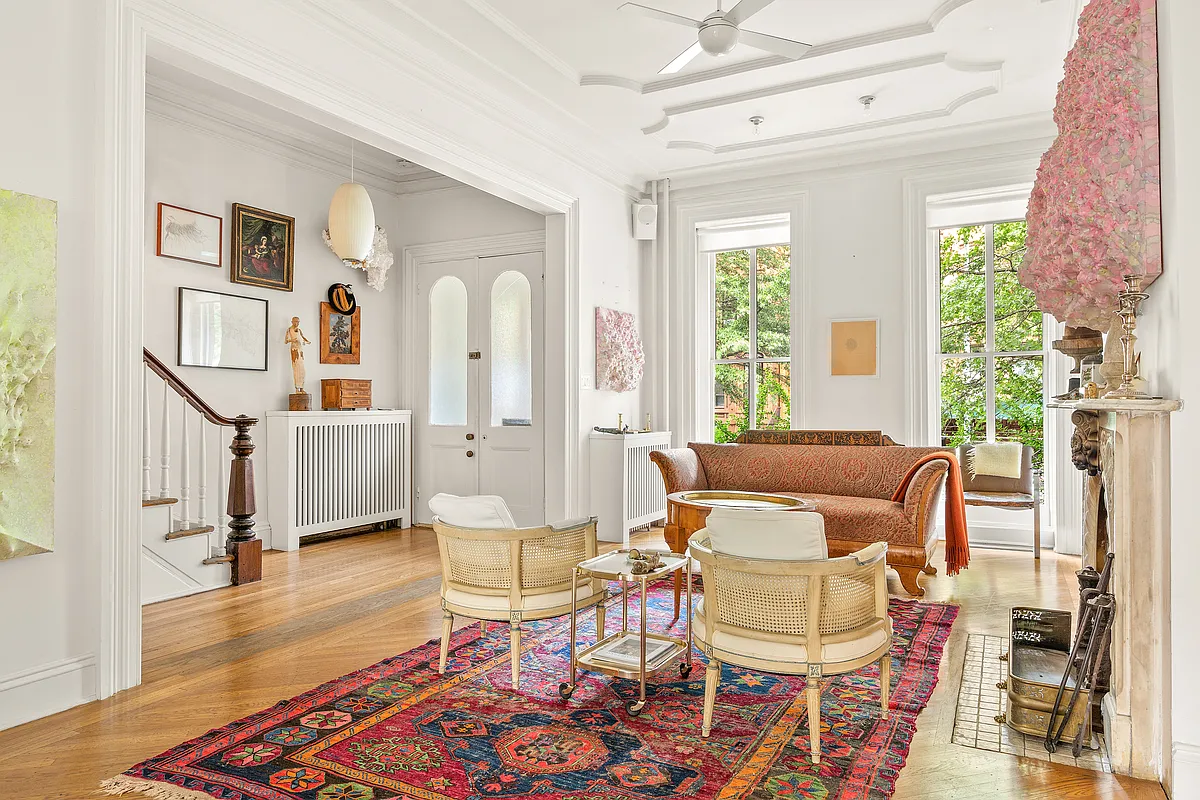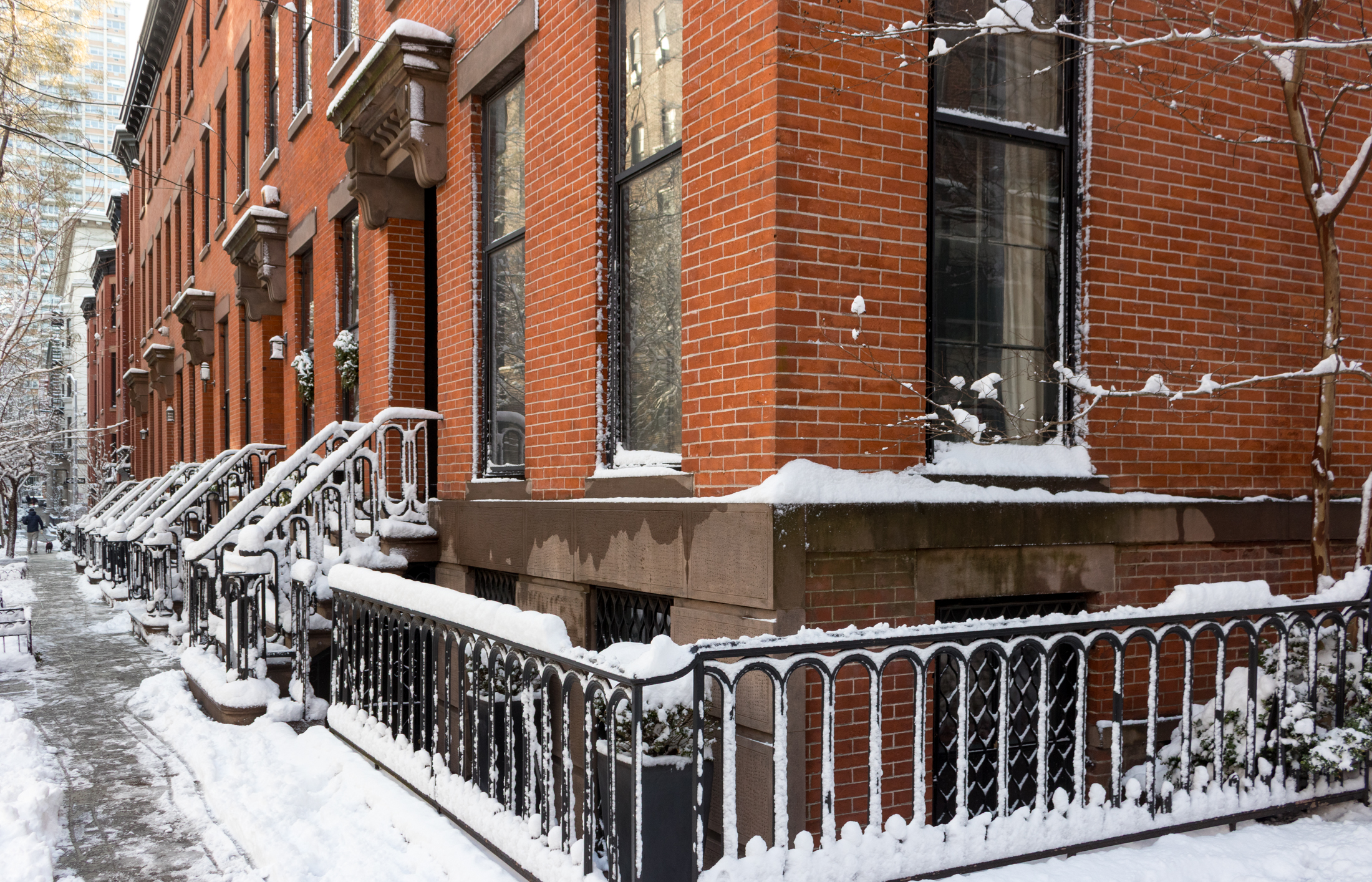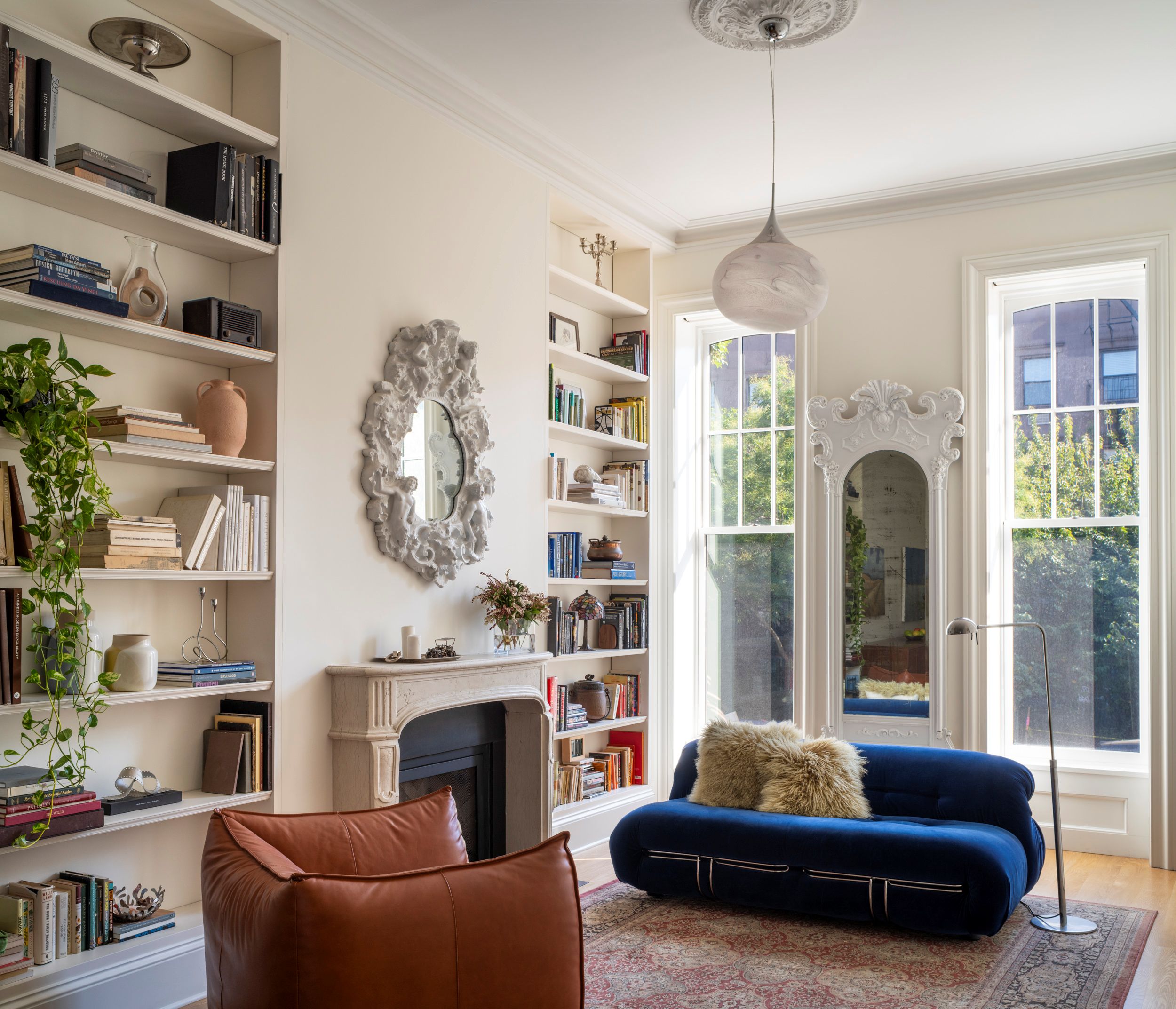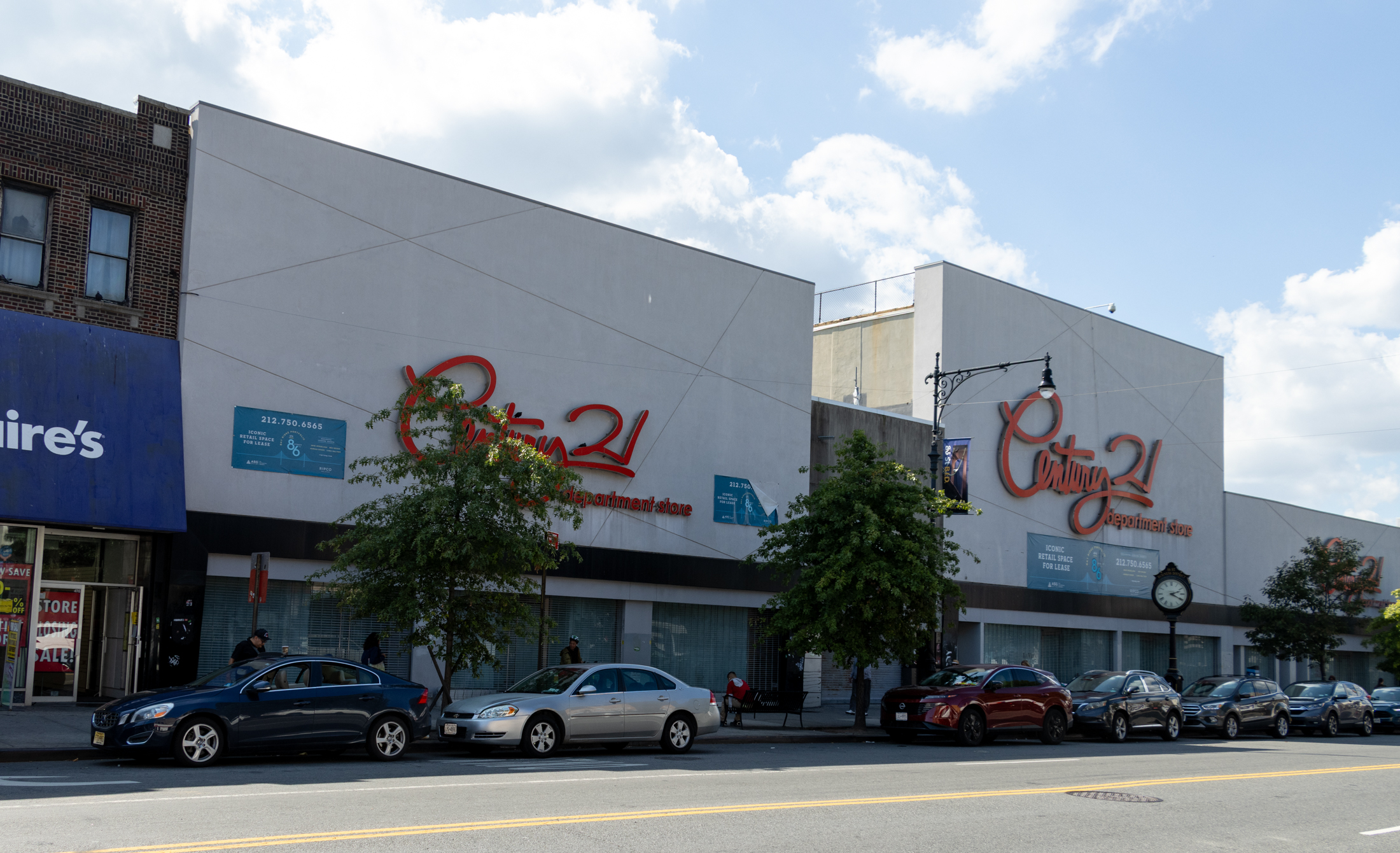Walkabout with Montrose: Historic Bedford, Brooklyn
In December of 1668, permission was given to one Thomas Lambertse to build the first public building in the new town of Bedford. Naturally, it was a tavern, to accommodate strangers, travelers and other persons traveling this way with diet and lodging and horse meals. Thirty years later, Lambertse sold a parcel of Bedford land…


In December of 1668, permission was given to one Thomas Lambertse to build the first public building in the new town of Bedford. Naturally, it was a tavern, to accommodate strangers, travelers and other persons traveling this way with diet and lodging and horse meals.
Thirty years later, Lambertse sold a parcel of Bedford land to a farmer from Flatbush Township named Leffert Pieterse.
The Lefferts family would continue to acquire land in central Brooklyn, eventually making themselves the largest landowners, largest slaveholders, and one of the wealthiest families in Brooklyn for many years to come.

The village of Bedford, also called Bedford Corners, was at the center of their fiefdom, and for over one hundred years, several Lefferts family mansions and homesteads were centered in the area of Bedford Ave, Fulton Street and Arlington Place.
Bedford remained a quiet farming community until 1776, and the bloodiest battle of the Revolutionary War, the Battle of Long Island, aka the Battle of Brooklyn. 10,000 British soldiers and Hessian mercenaries, led by General William Howe, marched through Bedford, guided by unwilling Bedford residents William Howard and his son, and headed south to surprise General Washington’s 7,000 troops.
A fierce and bloody battle ensued in the wooded hills now part of Green-Wood Cemetery and Prospect Park.

The ill prepared American forces sustained heavy losses, but thanks to a Maryland regiment providing cover, and a very foggy night, Washington and his surviving troops were able to escape across the Gowanus Creek, and eventually to Manhattan and out of NY to safety.
The British occupied Brooklyn, and then Manhattan, for the rest of the war. The Lefferts homesteads, as well as the homes of other well off Bedford landowners, such as the Suydams, Vanderbilts, Blooms and Van Endens, were occupied as officer’s housing for the duration.
The large Jacobus Lefferts house was officer’s headquarters, while the foot soldiers and Hessian mercenaries lived in excavated barracks, stretching from present day Franklin and Classon, down to Franklin and Bergen, as well as Sterling, St. Marks, Prospect Place and Park Place, now part of Crown Heights North.

As development progressed in the late 19th century, artifacts and skeletal remains were found in the remains of these redoubts.
All of the records of Bedford from before 1776 were stolen by Loyalist assistant town clerk John Rapelye. He lifted them from town clerk John Lefferts’ home, and took them to England, where they were lost. As far as numbers from the War, we do know that over ten thousand Americans lost their lives in the prison ships off Wallabout Bay, including prisoners of this battle.
In 1782, the Provisional Peace Treaty ending the war was signed in Paris. As a parting shot, the British proceeded to cut down most of the primeval forests of Brooklyn, and load them into ships to take back to England. When they left Brooklyn in 1783, there was barely one tree in Brooklyn that predated the Revolutionary War.

In Bedford today, now Bedford Suyvesant, nothing now remains of this time in Brooklyn history. The last Lefferts house remaining in the Arlington Place/Fulton St. area was torn down in 1909, and a family cemetery is rumored to be in an empty lot on the corner of Hancock and Bedford, although no headstones are present.
There are no other remaining homes in Bed Stuy from this era. The Lefferts family, the children of Judge Lefferts Lefferts, who was a boy during the British occupation of his home, sold off most of the family land by the mid 1800’s, allowing the development of most of Bedford Stuyvesant, Stuyvesant Heights, and Crown Heights.
Another branch of the family went on to sell off the parcels which became Lefferts Manor, in nearby Flatbush. The Lefferts Homestead, now in Prospect Park, is the last remaining home of this large and wealthy family.

Sketches, photographs, and descriptions of patriarch Jacobus Lefferts’ manor, built in 1768, which used to stand on Arlington Place, show a large columned Federal/Greek Revival stone house, which was said to have mahogany doors, 10 foot windows, solid silver doorknobs, and fireplaces large enough to walk in.
This was the house commandeered by British officers, surviving until the house was torn down in 1893. The town of Bedford was one of the original villages making up the township of Brooklyn.
By the late 1800’s, it was an upper middle class enclave of homes, businesses and churches, and thrived in part, for the same reason it was so valued by the British during the Revolution: as a transportation hub, where important roads, trails, and later railways and trolleys connected Brooklyn to the rest of Long Island.
The 31st annual Bed Stuy House Tour is this Saturday, October 17th. The self guided tour begins at the magnificent Boy’s High School, at the corner of Putnam and Marcy Avenues, and runs from 11-4. See the Brownstoners of Bed Stuy website for more details. http://www.brownstonersofbedstuy.org/. My Flickr page shows some of the great architecture of Bed Stuy.
Much of the historic background for this article is from Images of America: Bedford-Stuyvesant, by Wilhelmema Rhodes Kelly, a wealth of information on this great community.





Great write-up. I love New York history, and this told me things I never knew. Thanks!
“Looking at our built environment one could surmise that nothing much happened in Brooklyn prior to 1860 or so”
Interesting you state that because thats what I thought when I first arrived on these shores (having coming from a land littered with buildings from 1100 through 1800). I somehow became more at home when I started to learn of the history of the City, including even the more recent history. It gave me some important sense of attachment which I can’t quite put into words, but if my memory serves me, Montorse Morris did once articulate well in one of her posts.
very interesting stuff.
you know, there’s a revolutionary era house right on Flushing Avenue in Bushwick. It looks almost like that first picture shown. very rural and certainly out of place amongst factories and car repair shops.
It’s the Onderdonk house, on the corner of Onderdonk and Flushing for those interested. I’m not sure about the hours of operation but it’s worth looking into.
hey Monty, yet another fascinating write-up. Thanks!
LOVE these writeups MM. Thanks!
This points out how thoroughly our Borough’s early history has been wiped out. Looking at our built environment one could surmise that nothing much happened in Brooklyn prior to 1860 or so. And yet so much happened. Save for a few house museums such as the Lefferts house in Prospect Park, and the Wyckoff house, and a few early 19th century houses in Brooklyn Heights, there is very little.
The Dutch style farmhouses were so interesting and full of character; it is a shame they were almost all razed. The Rem Lefferts house in particualr was a beautiful example of regional architecture. Perhaps if the story of the Revolutionary war battles in Brooklyn had been more upbeat, more of that era’s buildings would have been saved but I guess no one wanted to be reminded of the rout and retreat of the American forces from Brooklyn.
Pete;
Political incorporation was very much in vogue in the latter half of the 19th century. The various towns of Kings county were incorporated into the City of Brooklyn shortly before the City of Brooklyn itself was swallowed by NYC. I forget the exact date, but it was only a few years before the birth of modern-day NYC.
Montrose;
From what I’ve read, the wealthy town of Bedford included what is now called Crown Heights North. I was wondering how the town of Bedford came to be associatd with the distinctly different town of Stuyvesant. Do you know?
Very nice write-up. The history of development is kind of a hobby for me.
Wonderful story and fantastic pictures.
geez, even in 1668 they needed building permits. that gov’t intrusion has a long history.
So, to the usage of ‘Brooklyn’… if Kings county was comprised of different towns plus city of brooklyn…wouldn’t Lefferts be considered wealthiest in Kings county or Bedford but not really Brooklyn.
Anyone want to look up – how long all of kings county was incorporated into city of Brooklyn before that was merged with City of New York.